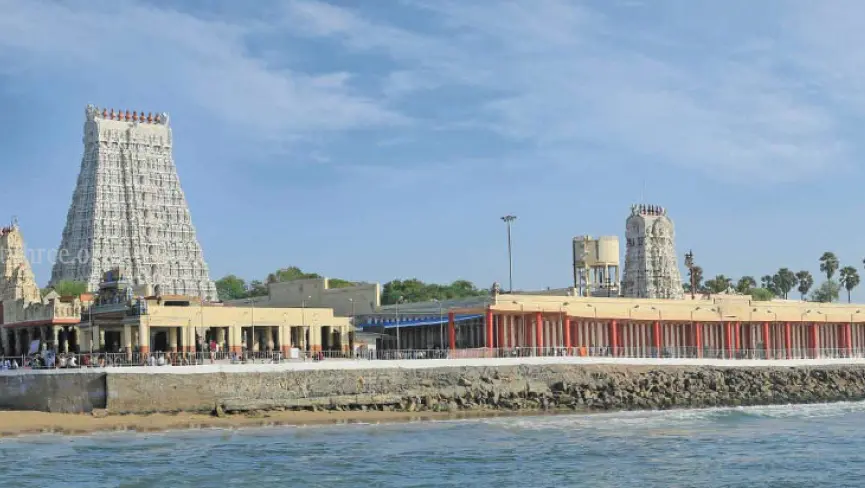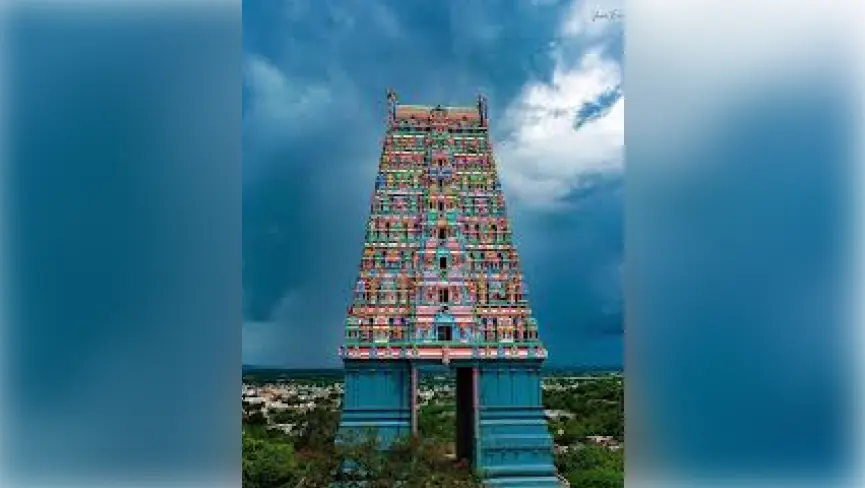
Tiruchendur Temple Travel Guide: History, Darshan Timings & Tips
Tiruchendur Temple, one of the six abodes (Arupadai Veedu) of Lord Murugan, is a revered pilgrimage destination in Tamil Nadu. Located on the scenic shores of the Bay of Bengal, this temple combines spiritual serenity with coastal beauty, attracting thousands of devotees every year.
History of Tiruchendur Murugan Temple
Tiruchendur Murugan Temple, also known as Subramanya Swamy Temple, is one of the most ancient and revered temples dedicated to Lord Murugan in South India. It is part of the sacred Arupadai Veedu — the six abodes of Murugan mentioned in Tamil literature and devotion.
Mythological Significance
According to Hindu mythology, this is the very site where Lord Murugan (Kartikeya) waged war against the demon Soorapadman. The epic battle, which lasted six days, concluded on the seventh day (Skanda Sashti), when Murugan split the demon into two — one half became his peacock (vehicle) and the other half became his rooster emblem.
Temple Architecture & Origins
- The temple is over 2,000 years old and was originally a cave temple built by ancient Tamil rulers.
- It was later expanded into a massive Dravidian-style temple complex with a 9-tiered Rajagopuram (tower) facing west — unlike most Hindu temples, which face east.
- The main sanctum (Garbhagriha) is carved into a rock, facing the sea — an architectural rarity.
- Historical inscriptions from the Pandya and Nayak periods mention royal patronage, donations, and renovations to the temple.
Unique Coastal Location
- Tiruchendur is the only Arupadai Veedu temple located on the seashore — all others are on hills.
- It is believed that Vishwakarma, the divine architect, built the temple under divine instruction.
- The nearby Naazhi Kinaru, a freshwater spring just meters from the sea, is considered sacred and is believed to have healing powers.
Colonial Period History
During the 17th century, the temple was attacked by Dutch invaders who looted the temple and took the idol of Lord Murugan. However, strong ocean waves forced them to abandon the statue at sea. Miraculously, the idol washed ashore and was retrieved by local devotees — an event still commemorated with reverence.
Cultural and Spiritual Legacy
- Tiruchendur Temple is referenced in ancient Tamil scriptures like Thiruppugazh, Kandar Alangaram, and Skanda Purana.
- Saints like Arunagirinathar composed hymns here, praising Lord Murugan.
- The temple remains a major pilgrimage site for Tamil devotees across India and abroad.
Tiruchendur Murugan Temple Darshan Timings
Tiruchendur Murugan Temple is open for devotees every day of the week. The temple follows a structured schedule for darshan and various poojas.
Temple Opening Hours
| Session | Timing |
|---|---|
| Morning | 5:30 AM – 12:00 PM |
| Evening | 4:00 PM – 9:00 PM |
Daily Pooja Schedule
| Pooja Name | Time |
|---|---|
| Palliarai Deepa Aradhanai | 5:30 AM |
| Vizha Pooja | 7:00 AM |
| Kala Santhi Pooja | 8:00 AM |
| Uchikala Pooja | 10:00 AM |
| Sayaraksha Pooja | 5:00 PM |
| Rakaala Pooja | 8:00 PM |
Major Festivals Celebrated
- Skanda Sashti – Commemorates Murugan’s victory over evil.
- Thai Poosam – Celebrated with Kavadi and processions.
- Panguni Uthiram – Wedding festival of Lord Murugan and Deivanai.
How to Reach Tiruchendur Temple
By Air:
-
Nearest Airport: Tuticorin Airport (TCR) – approx. 40 km
-
Alternative: Madurai Airport – approx. 175 km
By Train:
-
Tiruchendur Railway Station (TCN) is just 1.5 km from the temple.
Well connected to major cities like Chennai, Madurai, and Tirunelveli.
By Road:
-
Regular buses and private vehicles connect Tiruchendur to:
-
Madurai – 175 km
-
Tirunelveli – 60 km
-
Tuticorin – 40 km
-
Chennai – 650 km
-

